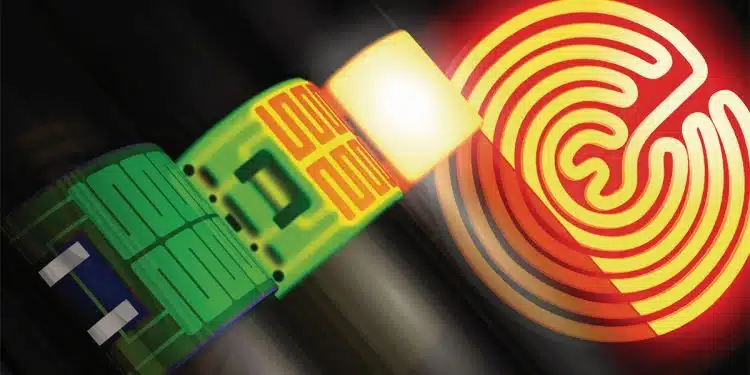Heraeus Electronics introduces the PTC4900 Series Self-Regulating Heater Inks, a breakthrough in heater technology. These customizable PTC (Positive Thermal Coefficient) inks offer enhanced performance, expanded operating temperatures, and unparalleled customization options. Designed for precise temperature control, they are suitable for various applications, including EV battery heaters, ADAS heaters, flooring heaters and cabin comfort heaters.
Traditionally, PTC inks have been limited in their scope, temperature offerings and customization capabilities. Heraeus Electronics has changed the game with the PTC4900 Series, a range of customizable pastes targeting heater operating temperatures between 50 – 90°C, with products targeting temperatures above 100°C currently in development. This breakthrough technology provides tailored resistances to meet precise temperature control requirements without the need to change heater designs.
“PTC4900 Series Self-Regulating Heater Inks are a disruptive new solution that expands the range and applications of the flexible and rigid PTC heater market,” said Mark Challingsworth, Head of Business Line – Thick Film at Heraeus Electronics. “We are dedicated to providing our customers with the best materials for their heater designs, and this new series exemplifies our commitment to innovation and customer-centric solutions.”
One of the key advantages of the PTC4900 Series is its improved PTC performance and expanded operating temperatures compared to competitors’ offerings. While others provide a single material with a small temperature range, Heraeus Electronics’ solution allows for precise heating with self-regulating properties, enhancing product safety.
The launch of Heraeus Electronics’ drop-in solution expands the range of applications for the flexible and rigid PTC heater market. By eliminating the need for time-consuming adjustments and allowing for wider process windows, Heraeus Electronics empowers its customers to accelerate development timelines, reduce time to market, and achieve improved yield in production.
Customers also will benefit from the blendable system of resistors, simplifying circuit design and streamlining the production process. “Our customizable resistances allow for easier heater production and repeatability, avoiding lot-to-lot variations,” said Dean Buzby, Global Product Manager – Thick Film at Heraeus Electronics. “This saves our customers development time, improves yield in production and shortens time to market.”
Heraeus Electronics has a long-standing reputation for dependable product quality, technical service, and hands-on support. The company’s experts work directly with customers to find the best solution for their specific needs, ensuring maximum performance and customer satisfaction.






























